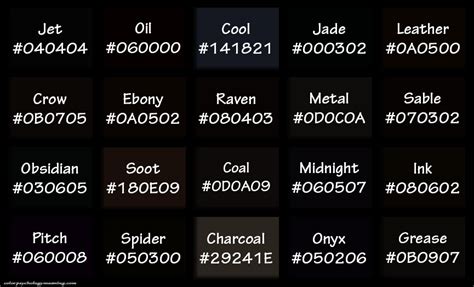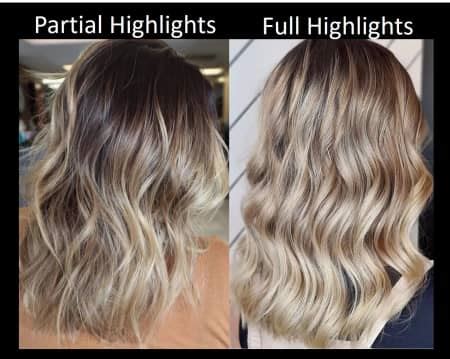Introduction
Embark on a hair-color journey that answers your most pressing questions about partial vs. full highlights. From understanding the subtle nuances to choosing the technique that suits your unique style, this comprehensive guide will empower you to make an informed decision for your next salon appointment.

Differentiating Partial and Full Highlights
Partial Highlights:
- Definition: Strategically placed highlights that focus on specific areas of the hair, such as the crown, front pieces, or a few strands throughout the hair.
- Effects: Enhances natural hair color with subtle dimension, brightness, and warmth.
Full Highlights:
- Definition: A complete application of highlights over the entire head of hair.
- Effects: Creates a transformative and dramatic color change, adding depth, texture, and overall luminosity.
Deciding Your Dream Highlight
Consider these factors when deciding between partial and full highlights:
- Desired Level of Change: Partial highlights offer a gradual and natural transformation, while full highlights provide a more noticeable and striking result.
- Hair Health: Full highlights require more chemical processing, so they may not be suitable for damaged or fragile hair. Partial highlights are a less damaging option.
- Maintenance: Partial highlights require less frequent touch-ups (every 6-8 weeks) compared to full highlights (every 4-6 weeks).
- Cost: Full highlights are typically more expensive due to the additional time and product required.
Customer Insights: Uncovering Your Motivations
Why Partial Highlights?
- “I want to add a subtle pop of color to my hair without making a drastic change.”
- “I’m not ready for a full head of highlights and want to try something low-maintenance.”
- “My hair is thin and damaged, and I’m looking for a highlighting technique that won’t compromise its health.”
Why Full Highlights?
- “I want a complete hair makeover with a noticeable difference in color.”
- “I have gray coverage needs and prefer a technique that will blend them seamlessly.”
- “I’m willing to invest in a more transformative and dramatic hair color.”
Step-by-Step Techniques for a Highlighted Masterpiece
Partial Highlights:
- Sectioning: Divide the hair into small sections to create a natural-looking pattern.
- Foiling: Place foil strips under the selected sections of hair.
- Application: Use a brush or comb to apply the color onto the hair, ensuring it touches the foil.
- Processing: Leave the color on for the recommended time (typically 20-30 minutes).
- Rinsing: Remove the foils and rinse the hair thoroughly.
Full Highlights:
- Sectioning: Divide the hair into smaller, even sections.
- Foiling: Place foil strips throughout the entire head of hair.
- Application: Apply the color using a brush or comb, carefully distributing it over each section.
- Processing: Follow the instructions on the hair color product for the appropriate processing time (typically 30-45 minutes).
- Rinsing: Unfoil the hair and rinse it thoroughly.
Creative Applications: Unveiling New Dimensions
Push the boundaries of highlighting with these innovative ideas:
- Ombré Highlights: A gradual transition from dark roots to lighter ends, creating a soft and natural blend.
- Balayage: A freehand painting technique that creates soft, painterly highlights that mimic natural sun-kissed hair.
- Reverse Highlights: A highlighting technique that focuses on adding darker sections to lighten hair, creating a subtle and sophisticated effect.
- Lowlights: A complementary technique to highlights, adding depth and dimension by adding darker shades to the hair.
Tables for Your Convenience
| Feature | Partial Highlights | Full Highlights |
|---|---|---|
| Color Change | Subtle | Dramatic |
| Maintenance | Less frequent touch-ups | More frequent touch-ups |
| Hair Damage | Less damaging | More damaging |
| Cost | Lower | Higher |
| Technique | Focuses on specific areas | Covers the entire head |
Addressing Pain Points: Our Commitment to Customer Satisfaction
- “My highlights are too bright and brassy.”
- “My highlights are not visible enough.”
- “My highlights are too warm or too cool.”
- “My highlights are damaging my hair.”
Solutions:
- Choose the right toner: A toner can neutralize unwanted tones and adjust the color to your desired hue.
- Ask for a double process: Applying two rounds of highlights can enhance the color’s visibility and dimension.
- Consult a colorist: A professional colorist can assess your hair and recommend the most suitable highlighting technique and color shades.
- Use a clarifying shampoo: Clarifying shampoos can remove product buildup, excess oils, and minerals that can dull highlights.
Conclusion
With partial highlights vs. full highlights, the choice is yours. By understanding the nuances of each technique, considering your desired outcome, and addressing your unique hair needs, you can踏上 embark on a journey towards a stunning and radiant hair transformation. Embrace the beauty of highlights and let your hair shine brighter than ever before.
